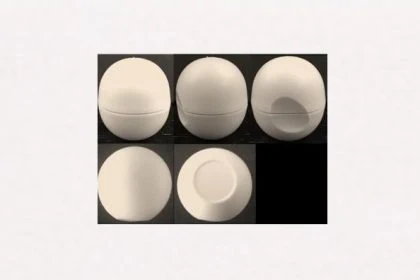The European Court of Justice today issued an important ruling on the jurisdiction of EU courts when an action is brought for infringement of a Union trademark by online advertising. Where is the infringement action to be filed? In the EU country where advertising and sales offers were shown, the ECJ ruled today.

The main focus of the hearing was Article 97(5) of Regulation (EC) No 207/2009 and its interpretation with regard to the jurisdiction of the EU courts.
Is an infringement action concerning a Union trade mark to be brought before the courts in the EU country in which the defendant is domiciled or in the country in which advertising and sales offers were shown?
The latter was confirmed by today’s judgement. An infringement action must be brought before a Union trade mark court in the EU Member State in which the consumers or traders to whom the infringing advertising or sales offers are addressed are located, the ECJ ruled.
The facts
Both parties are manufacturers and sellers of audio equipment, AMS Neve Ltd (UK) and Heritage Audio SL (Spain). In October 2015, the British AMS Neve brought an action against the Spanish competitor for infringement of two trade marks registered in the UK. The contested Union trade mark consists of the number 1073 and was registered in Nice Class 9 for essentially “recording, mixing and processing equipment for sound studios”.
AMS Neve alleges that Heritage Audio SL offered for sale audio equipment bearing identical or similar signs. In particular, the case concerned that representation in an English-language online portal listing distributors in various countries, including the UK, under ‘where to buy’. Furthermore, it is clear from the General Conditions of Sale that Heritage Audio accepts orders from any Member State of the European Union.
The defendants argued that they did not themselves advertise, offer for sale or sell in the United Kingdom. However, they did not rule out the possibility that Heritage Audio’s products might have been acquired in the United Kingdom through other companies. In addition, the defendants in the main proceedings raised a plea of lack of jurisdiction of the United Kingdom court seised.
The United Kingdom Intellectual Property and Enterprise Court held that the Spanish courts had jurisdiction, since that is where the defendant is domiciled. This is also apparent from Article 97(5), which provides that actions for infringement may be brought before the courts of the Member State in which the act of infringement was committed. That was in Spain, where the defendants were planning their sales activities.
The UK Court of Appeal (England & Wales) again found that “the Member State in which an act of infringement was committed” is the Member State in which the defendant organised his website and social media accounts within the meaning of Article 97(5) of Regulation No 207/2009. It refers to the territory of the Member State in which the consumers or traders to whom the advertising and sales offers are addressed are established.
ECJ on the rules on jurisdiction of EU courts
The European Court of Justice (ECJ) first clarified that Directive 2008/95/EC and Directive (EU) 2015/2436, which replaced Directive 2008/95/EC with effect from 19 January 2019, did not contain any specific rules on jurisdiction. An infringement action such as the one at issue in the present case, in so far as it concerns national trade marks, falls under the rules on jurisdiction laid down in Regulation No 1215/2012. The infringement of a Union trade mark falls under the rules on jurisdiction laid down in Regulation No 207/2009, the ECJ stated.
According to the Court, an action must be brought before the courts in the EU where the defendant is domiciled in accordance with Article 97(1) of Regulation No 207/2009. However, the plaintiff may “also” bring his action before the courts of the Member State “in which an infringing act has been committed or is threatened”, as provided by Article 97(5).
Plaintiff must decide in favour of a plea in law
The applicant has determined the extent of the territorial jurisdiction of the court seised according to whether he chooses to bring an action for infringement before the Union trade mark court of the defendant’s domicile or before the court of the territory in which the act of infringement was committed or threatened. The ECJ stated that an infringement action under Article 97(1) potentially concerned acts of infringement committed throughout the territory of the Union, whereas, if based on Article 97(5), the action was limited to acts of infringement committed or threatened in a single Member State, namely the Member State in which the court seised was situated.
Multiple actions brought side by side are not possible
Several actions based side by side on Article 97(1) and (5) cannot, however, be brought; a plaintiff must choose between the alternatives, the court specified. However, where several infringement actions between the same parties concern the use of the same sign but not the same territory, those actions do not relate to the same subject-matter and are therefore not subject to the lis pendens rules. The ECJ pointed out that in such a case the courts of different Member States cannot give “divergent judgments” within the meaning of recital 17 of Regulation No 207/2009, as the plaintiff’s actions concern different territories.
Online display of advertising and sales offers
If the acts alleged against the defendant consist in the online display of advertising and sales offers for goods bearing a sign identical with, or similar to, an EU trade mark without the proprietor’s consent, it must be held that those acts were committed in the territory of the consumers or traders to whom those advertising and sales offers are addressed. Such acts fall within the scope of Article 9(2)(b) and (d) of Regulation No 207/2009.
The expression “act of infringement” refers to such acts, the ECJ ruled. Whether these advertisements and offers subsequently led to the purchase of the defendant’s goods is irrelevant.
Ruling of the ECJ
The ECJ ruled that an action for infringement – in the interpretation of Article 97(5) of Regulation (EC) No 207/2009 – must be brought before a Union trade mark court in the EU Member State in which consumers or traders to whom the infringing advertising or sales offers are addressed are located. This also applies if the decisions and measures with regard to online notification were taken in another EU member state.
Do you also need support in a trademark or patent infringement action?
Our attorneys have many years of experience in trademark and patent law and are entitled to represent you before any court in Germany as well as internationally.
If you are interested, please contact us.
Sources:
Today’s judgement of ECJ EU:C:2019:674 “AMS Neve”
Image:
collage of our own, using AJEL/pixabay.com / CCO License and photosforyou /pixabay.com / CCO License








Leave a Reply